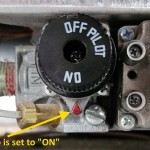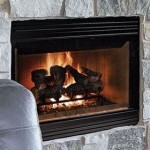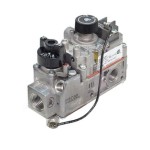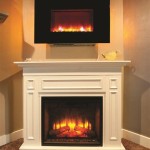Gas Heaters Fireplace Inserts: An In-Depth Look
Gas heater fireplace inserts represent a significant advancement in home heating technology, offering a combination of aesthetic appeal, efficiency, and convenience. These inserts are designed to fit directly into existing fireplaces, converting them into powerful and controllable gas-fueled heating systems. This article provides a comprehensive overview of gas heater fireplace inserts, covering their types, benefits, installation considerations, maintenance requirements, and safety features.
The allure of a traditional wood-burning fireplace is undeniable, evoking feelings of warmth and comfort. However, traditional fireplaces are notoriously inefficient, losing a significant portion of their heat up the chimney. Gas heater fireplace inserts address this inefficiency by providing a closed combustion system that directs heat into the room. These inserts are available in a variety of styles and sizes, allowing homeowners to choose an option that complements their existing décor and heating needs.
Understanding the different types of gas heater fireplace inserts available is crucial for making an informed purchasing decision. The primary distinctions lie in their venting systems and heating capabilities. A careful evaluation of these factors, along with consideration for installation costs and maintenance requirements, will help homeowners select the most suitable insert for their specific circumstances.
Types of Gas Heater Fireplace Inserts
Gas heater fireplace inserts are broadly categorized based on their venting requirements: direct vent, vent-free (also known as ventless), and B-vent. Each type offers distinct advantages and disadvantages, influencing their installation complexity and heating performance.
Direct Vent Inserts: Direct vent inserts are considered the safest and most efficient option. They draw combustion air from outside the home and expel exhaust gases directly outside through a sealed venting system. This sealed system prevents indoor air from being used for combustion, reducing the risk of carbon monoxide poisoning and improving overall energy efficiency. Direct vent systems typically require professional installation to ensure proper sealing and venting.
The installation process for direct vent inserts involves inserting a flexible or rigid vent pipe through the existing chimney or creating a new vent opening through an exterior wall. The direct vent system allows for flexible placement of the insert within the fireplace opening and can be installed in homes without a pre-existing chimney in some cases. Due to the sealed combustion process, direct vent inserts offer superior heating performance and minimal heat loss.
Vent-Free (Ventless) Inserts: Vent-free inserts, as the name suggests, do not require any venting to the outside. They burn room air and release combustion byproducts directly into the living space. While this eliminates the need for venting installation and can potentially reduce installation costs, vent-free inserts require strict adherence to safety guidelines. They are equipped with oxygen depletion sensors (ODS) that automatically shut off the gas supply if the oxygen level in the room drops to an unsafe level.
Vent-free inserts are typically less expensive to install than direct vent models, but they are also less efficient and may not be suitable for all homes. They are best suited for well-ventilated areas and should not be used in bedrooms or small, enclosed spaces. Regular monitoring of carbon monoxide levels is recommended when using vent-free inserts. Furthermore, many jurisdictions have restrictions or outright bans on the installation of vent-free appliances due to safety concerns.
B-Vent Inserts: B-vent inserts utilize the existing chimney to vent exhaust gases. They draw combustion air from the room, and the exhaust is vented through a B-vent pipe that runs up the chimney. B-vent inserts are typically less expensive to install than direct vent models but are also less efficient. They can be a good option for homes with an existing chimney that is in good condition and meets current venting codes.
B-vent inserts require a functional chimney liner to ensure proper venting and prevent the leakage of exhaust gases into the home. A professional chimney inspection is recommended before installing a B-vent insert to assess the condition of the chimney and determine if any repairs or upgrades are needed. The efficiency of B-vent inserts can be improved by installing a chimney cap and sealing any air leaks in the fireplace opening.
Benefits of Gas Heater Fireplace Inserts
Gas heater fireplace inserts offer a multitude of benefits compared to traditional wood-burning fireplaces, contributing to improved comfort, convenience, and energy efficiency. These benefits include enhanced heating performance, ease of use, and environmental advantages.
Improved Heating Efficiency: Gas heater fireplace inserts are significantly more efficient than traditional wood-burning fireplaces. They typically have efficiency ratings ranging from 70% to 90%, meaning that a greater percentage of the fuel's energy is converted into usable heat. Traditional fireplaces, on the other hand, often have efficiency ratings of 10% or less, with the majority of the heat escaping up the chimney. This improved efficiency translates into lower heating costs and a more comfortable living environment.
The closed combustion system of gas heater fireplace inserts prevents heat from escaping up the chimney, maximizing heat output. Many gas heater fireplace inserts also feature adjustable flame settings and thermostatic controls, allowing homeowners to customize the heat output to their specific needs. Zone heating with a gas heater fireplace insert can help to reduce overall heating costs by focusing heat on the areas of the home that are being used most frequently.
Convenience and Ease of Use: Gas heater fireplace inserts offer unparalleled convenience compared to wood-burning fireplaces. They eliminate the need to chop, stack, and store wood, as well as the mess associated with burning wood, such as ashes and soot. Starting a gas fireplace insert is as simple as flipping a switch or pressing a button on a remote control. Many models also feature programmable thermostats that allow for automatic temperature control.
The ease of use of gas heater fireplace inserts makes them a practical heating solution for busy homeowners. They can be quickly and easily turned on or off as needed, providing instant heat without the hassle of tending to a wood fire. The clean-burning nature of gas also reduces the need for frequent cleaning and maintenance, further enhancing the convenience of gas heater fireplace inserts.
Environmental Advantages: Gas heater fireplace inserts are generally considered to be more environmentally friendly than wood-burning fireplaces. They produce fewer emissions, including particulate matter, which can contribute to air pollution. Natural gas is a relatively clean-burning fuel, and modern gas heater fireplace inserts are designed to minimize emissions.
Compared to burning wood, gas heater fireplace inserts produce significantly less smoke and creosote, reducing the risk of chimney fires. They also eliminate the need to harvest and transport wood, which can have a negative impact on forests and contribute to carbon emissions. By choosing a gas heater fireplace insert, homeowners can reduce their environmental footprint and contribute to cleaner air quality.
Installation Considerations and Safety
Proper installation is paramount for the safe and efficient operation of gas heater fireplace inserts. The installation process should be performed by a qualified professional who is familiar with local building codes and regulations. Neglecting proper installation can lead to serious safety hazards, including gas leaks, carbon monoxide poisoning, and fires.
Professional Installation: Hiring a licensed and experienced HVAC technician or fireplace installer is highly recommended. These professionals possess the necessary knowledge and skills to ensure that the insert is properly installed, vented, and connected to the gas supply. They will also be able to advise on the best type of insert for your specific fireplace and heating needs.
Professional installers will conduct a thorough inspection of the fireplace and chimney to assess their condition and determine if any repairs or upgrades are needed. They will also ensure that the insert is properly sized for the room and that the venting system meets all applicable safety standards. Proper installation is essential for maximizing the efficiency and safety of the gas heater fireplace insert.
Safety Features: Gas heater fireplace inserts are equipped with various safety features to protect homeowners from potential hazards. These features include oxygen depletion sensors (ODS), which automatically shut off the gas supply if the oxygen level in the room drops to an unsafe level. Pilot lights and electronic ignition systems are also designed to prevent gas leaks and ensure safe ignition.
Regular maintenance and inspection of the gas heater fireplace insert are crucial for ensuring that these safety features are functioning properly. Homeowners should also install and maintain carbon monoxide detectors in their homes to provide an early warning of any potential carbon monoxide leaks. It is important to familiarize oneself with the safety features of the specific model and follow the manufacturer's instructions for operation and maintenance.
Local Codes and Regulations: Before installing a gas heater fireplace insert, it is essential to check local building codes and regulations. These codes may specify requirements for venting, gas line connections, and electrical wiring. Compliance with local codes is essential for ensuring the safety and legality of the installation. Failure to comply with local codes can result in fines, penalties, and potential safety hazards.
Obtaining the necessary permits before starting the installation process is also crucial. Permit requirements vary depending on the jurisdiction, but they typically involve submitting plans and specifications to the local building department for approval. Obtaining the necessary permits ensures that the installation meets all applicable safety standards and regulations.
In conclusion, gas heater fireplace inserts offer a compelling alternative to traditional wood-burning fireplaces, providing a combination of efficiency, convenience, and aesthetic appeal. By understanding the different types of inserts available, their benefits, installation considerations, and safety features, homeowners can make an informed decision and enjoy the warmth and comfort of a gas-fueled fireplace for years to come.

Gas Fireplaces Inserts Stoves And Heaters The Hearth

Gas Fireplace Inserts Fireplacesdirect Com

Duluth Forge 27 In W 26000 Btu Black Vent Free Dual Burner Gas Fireplace Insert The Inserts Department At Com

Gas Fireplaces Inserts Stoves And Heaters The Hearth

Short Pump Va Fireplaces Stoves Gas Inserts Wood

Timberwolf Tdi3n Gas Burning Fireplace Insert Rockford Chimney

Gas Burning Fireplace Inserts We Install

Belmont Small Gas Insert

Procom Heating 32 000 Btu Gas Fireplace Insert Dual Fuel Technology With Remote Control 170098 The Home Depot

Existing Fireplace Or A Brand New Build Lopi Fireplaces








